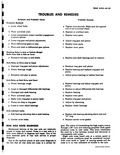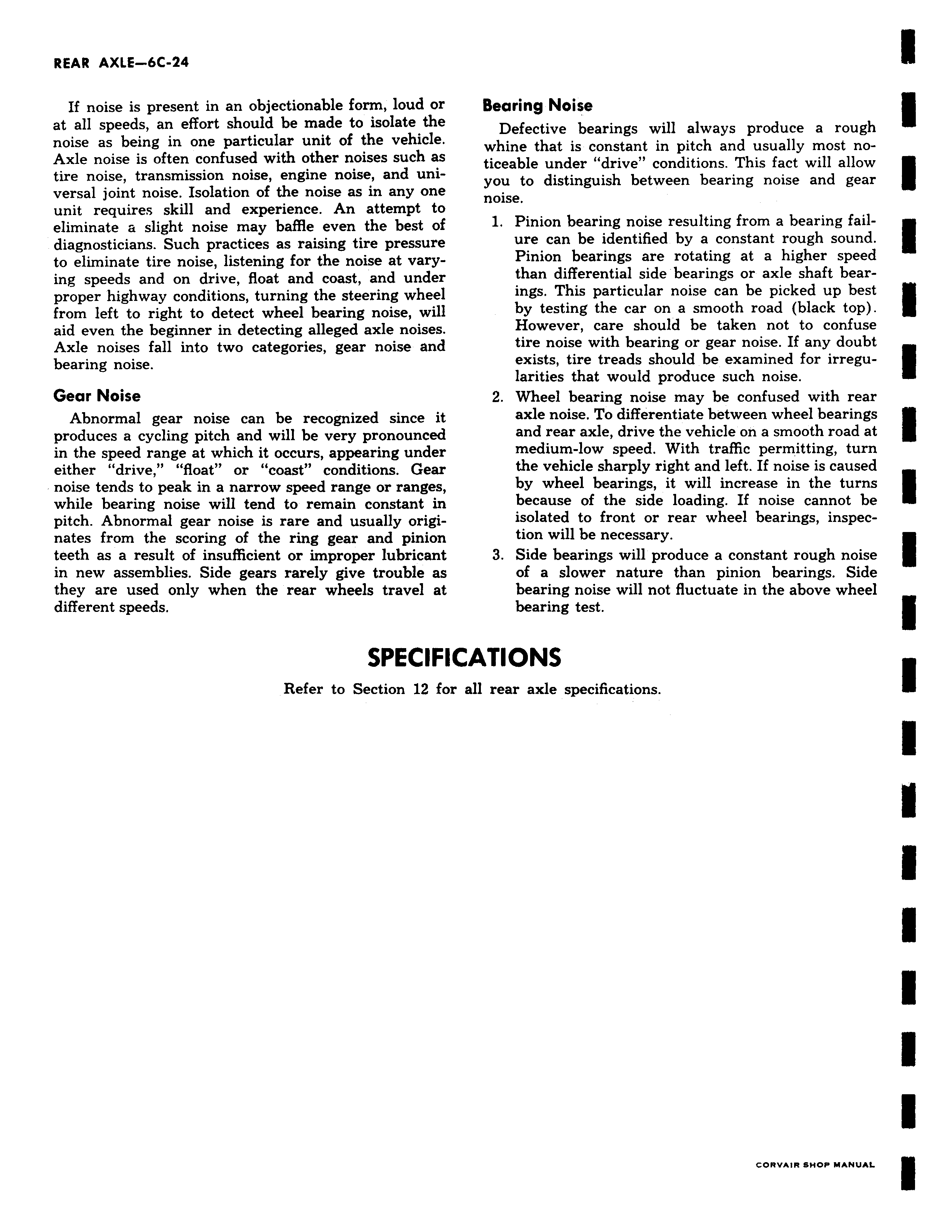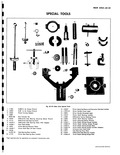Jeep Parts Wiki | Ford Parts Wiki
Home | Search | Browse | Marketplace | Messages | FAQ | Guest
Prev

 Next
Next
If noise is present in an objectionable form loud or at all speeds an effort should be made to isolate the noise as being in one particular unit of the vehicle Axle noise is often confused with other noises such as tire noise transmission noise engine noise and universal joint noise Isolation of the noise as in any one unit requires skill and experience An attempt to eliminate a slight noise may baffle even the best of diagnosticians Such practices as raising tire pressure to eliminate tire noise listening for the noise at varying speeds and on drive float and coast and under proper highway conditions turning the steering wheel from left to right to detect wheel bearing noise will aid even the beginner in detecting alleged axle noises Axle noises fall into two categories gear noise and bearing noise Gear Noise Abnormal gear noise can be recognized since it produces a cycling pitch and will be very pronounced in the speed range at which it occurs appearing under either drive float or coast conditions Gear noise tends to peak in a narrow speed range or ranges while bearing noise will tend to remain constant in pitch Abnormal gear noise is rare and usually originates from the scoring of the ring gear and pinion teeth as a result of insufficient or improper lubricant in new assemblies Side gears rarely give trouble as they are used only when the rear wheels travel at different speeds SPECIFI Refer to Section 12 foi Bearing Noise Defective bearings will always produce a rough whine that is constant in pitch and usually most noticeable under drive conditions This fact will allow you to distinguish between bearing noise and gear noise 1 Pinion bearing noise resulting from a bearing failure can be identified by a constant rough sound Pinion bearings are rotating at a higher speed than differential side bearings or axle shaft bearings This particular noise can be picked up best by testing the car on a smooth road black top However care should be taken not to confuse tire noise with bearing or gear noise If any doubt exists tire treads should be examined for irregularities that would produce such noise 2 Wheel bearing noise may be confused with rear axle noise To differentiate between wheel bearings and rear axle drive the vehicle on a smooth road at medium low speed With traffic permitting turn the vehicle sharply right and left If noise is caused by wheel bearings it will increase in the turns because of the side loading If noise cannot be isolated to front or rear wheel bearings inspection will be necessary 3 Side bearings will produce a constant rough noise of a slower nature than pinion bearings Side bearing noise will not fluctuate in the above wheel bearing test CATIONS all rear axle specifications

 Next
Next